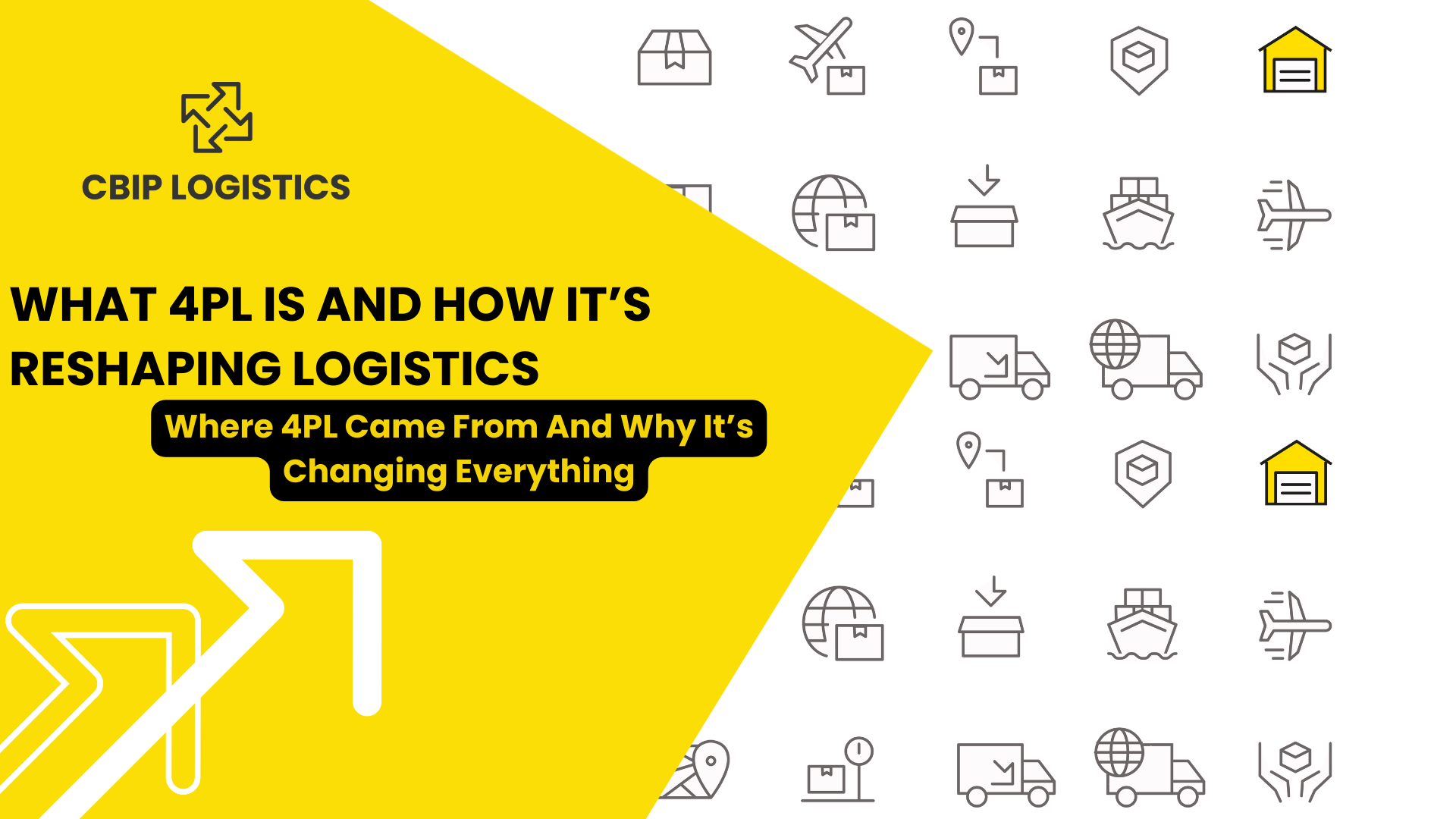What 4PL Is and How It's Reshaping the World of Logistics

As recently as 2005, fourth-party logistics (4PL) was little more than a pie-in-the-sky concept developed by tech giants like IBM and Accenture as a new avenue for their consulting software.
In the late 2010s, things began to change. As e-commerce rose in popularity, supply chains became more complicated. This was 4PL’s time to shine— managing logistics with many small, moving parts is one of the 4PL’s greatest strengths.
Now, 4PL has become a major player in the global logistics game, and growth has not stopped. Market research from Polaris expects the global 4PL industry to grow at a compound annual growth rate of 7.1% between 2022 and 2030.
But what is this rising giant in logistics and what does it offer that other logistics providers haven’t before?
Read About CBIP’s Global 4PL Logistics Services
Where did 4PL come from — and where is it going?
Back at the beginning of the twenty-first century, 4PLs were originally conceived as software solutions that could serve as a company’s entire shipping department.
The software would allow you to interface directly with logistics providers, compare them based on rates and delivery speed, and select according to your needs — kind of like the Airbnb of logistics.
The idea was the beginning of something that would allow increasingly complex, global supply chains to grow and flourish unencumbered. However, there have been several improvements to the original 4PL model since then that have made it better suited to modern logistics needs.
One of the key ingredients for making modern 4PLs work better than the ones from twenty years ago is the rise in technology.
4PL has risen alongside Industry 4.0 (also called the fourth industrial revolution), a movement that was coined in 2016 and is characterized by information transparency, interconnection, and the rise of AI and machine learning.
The vast improvements in technology over the past 20 years have allowed 4PLs to do things like:
- Use devices and apps to facilitate communication
- Collect immense amounts of data from any number of sources, organizing and analyzing that data
- Use AI and machine learning in tandem with collected data to solve problems and plan for the future
- Allow automated systems to complete day-to-day tasks and simple decisions
RELATED: HOW TO TAKE YOUR E-COMMERCE BUSINESS GLOBAL
3PL vs 4PL: What’s the difference?
Today, logistics companies may define themselves using a variety of names. For instance, many providers of warehouse management software have branched out into providing supply chain management services, calling themselves 4PLs.
Then there are the 3PLs that are also 4PLs…confused yet?
While different providers may wear different hats, the definitions and duties of the 4PL and 3PL are quite different.
If you are working with a 4PL provider, you are also utilizing 3PLs. That’s because 3PL companies own their own assets like warehouses and transportation fleets, while 4PLs find these assets for other companies.
In a pyramid made of the various logistic parties needed to keep a supply chain flowing, the 4PL sits on top. Its client is the e-commerce retailer, and its job is to get to know the client’s business needs inside and out, to select all the 3PLs, freight transportation, and other logistics services the client will need, and to manage all of those services for the client.
The 4PL’s job is ongoing, working more as a strategic partner than a service. A good 4PL does not simply “set and forget”; they continuously consult with clients on logistics, manage the supply chain, and make sure that data and communications flow freely throughout the supply chain.
Why do DTC retailers benefit from the 4PL model?
Let’s say one 3PL specializes in shipping goods from Vietnam to Germany through a particular shipping route. However, perhaps this company must always ship to the same port in Germany because they own warehouses in that particular port.
But what if customs costs for shipping to that port in Germany skyrocket? Clients working with this 3PL provider would be forced to either take on the increased costs or go back to the drawing board and find a new logistics provider altogether.
Even worse, clients may not even hear about the situation until the goods have been shipped to the other port. That can quickly turn into severe delays and risk upsetting customers.
We saw countless real-life examples of this happening during the pandemic when a new supply chain catastrophe seemed to be hitting on a bi-weekly basis.
Yet, even with disasters hitting freight shipping and last-mile fulfillment alike, customer expectations for delivery speed and transparency continued to rise.
That is where the 4PL comes in.
A competent 4PL in the same situation could provide you, the client, with a long list of 3PL and other operators in the region to use as alternatives – before these delays become a problem.
This allows you to resolve the issues with a time and price that works for you and your customers.
4PLs make complicated supply chains easier
As supply chains become more complex, clients are not just concerned with moving freight from point A to point B. They are consolidating freight from all over the world.
Add returns management and last-mile logistics to the mix and you could be dealing with a mix of dozens of providers.
Say you are a DTC retailer with suppliers in Vietnam and Cambodia, trying to get your goods into the UK for sale in that market. You decide to consolidate goods from both countries at the Vietnamese port before exporting so they are easier to track.
Unfortunately, coordinating logistics transportation services across multiple countries so that all arrive at the same port for shipment at about the same time is tough. If you are a growing organization without a dedicated in-house logistics team, then a process like this may be impossible.
By working with a 4PL firm, your business can have a single point of contact for managing your supply chain instead of a laundry list of carriers, haulers, and warehouses to manage. They can take the place of your in-house shipping team; arranging and managing contracts for you.
Most importantly, 4PLs can increase the cost-effectiveness of your operations by adding technology to your supply chain. A growing number of 4PLs are using AI and databases to give you greater visibility in stock management, supply chain visualization, and even managing packing space in shipping containers.
This lets your business run leaner and gives you the flexibility needed to reach new clients quickly.
Want to learn more about the 4PL model?
Want to expand to a new market or simply strengthen your logistics operations? We can help.
At CBIP Logistics, we are an Asia-based 4PL firm specializing in providing global logistics solutions from East to West.
We use our network of global logistics providers to design a logistics operation that meets your unique needs. We won’t just help you find providers either; We can manage everything for you so you can focus on growing your brand.
From fulfillment and last mile to state-of-the-art logistics technology, we do it all. Working with CBIP means you get access to the strongest contacts without the headache of searching through thousands of providers on your own.
Get in touch today for a free consultation and see how CBIP’s 4PL operations can get things moving for your business.






